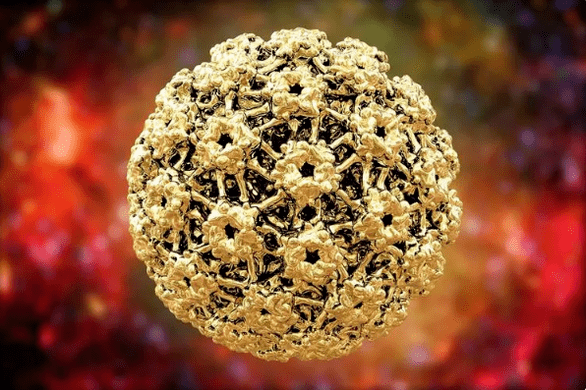
HPV, or Papillomavirus in humans, is one of the most common sexually transmitted diseases in the 21st century.It's easy to receive and cannot be cured.It sounds scary?We answer the most common questions about this infection in our document!
What virus?New?
In fact, HPV is as old as a world.It was he who was the cause of warts, papillae, warts and other skin formations.
These viruses were combined into a single group in 1971.The important difference between these strains is unique: Some of them are at risk of low onco, others are highco.In modern health practice, it is not the usual practice to check the presence of all 600 types, which is to find out that a person is a person who transports 16 strains, 14 of which causes cancer conditions: 16, 18, 31, 33, 35, 39, 45, 51, 52, 58, viruses for women especially dangerous, because cervical cancer can cause.However, men are also at risk: genital cancer often develops from the destructive effect of HPV inside the cells.
How is it transmitted?
Sex and domestic route.However, sexually transmission is the most common.The possibility of a woman will be infected in the first years of sexual activity, more than 50 %.The right path is not capturing HPV - to curb random sex without being protected and using condoms.However, even condoms do not protect one hundred percent, because the HPV is transmitted when the mucous membrane contacts: through kisses, contact in prelude and oral sex.
The probability of infection increases positively with the number of partners: your positive sex life, the more chances of being infected with HPV.The transmission of households can also: When using another person's scarf or razor.
If your partner is infected with micro -duto, it is likely that you also have it.In men infected with HPV, pointed Condylomas and flat warts occur both on the penis and in groin.If you suddenly notice strange skin blocks, immediately notify your boyfriend and pass the appropriate test.
How to find out that I have HPV?
The easiest way is to hand over a gynecological stain to determine HPV and cytology.As we noted, they checked the presence of only 16 virus strains.You may doubt the presence of the 6th or 11th strain without analysis: If you or your partner have papillomas or pointed condyromas in the genital area, you are likely that you are a papillomavirus and the analysis will confirm this.
For viruses of high cancer risk, they do not manifest and intuitive their presence in the body is difficult to identify - analysis of cytographic, cervical screening and HPV testing are necessary.Due to the disabilities of the disease, strains at risk of high cancer are particularly dangerous for women who do not pass the annual papa test (cytological analysis) at gynecologists.The process of passing the disease has no symptoms, and at this time, HPV integrates into the cage and changes the structure, turning it into malignant.Malignant cells help determine cytological analysis, performed at a plan planned by a gynecologist every six months or a year.By the way, they are better not to miss, especially those with HPV.
If I found an HPV, would I have cancer?
Do not drive a horse -drawn carriage.As we said, more than 80 % of women, this planet can get sick with HPV.Obviously, not everyone develops cervical cancer.From the infection of HPV to the development of a pre -cancer state will overcome a lot of time.Visit the exams according to the annual plan from the gynecologist, perform the tests in a timely manner, and then the doctor diagnosed the presence of HPV and the first malignant changes in cells long before developing cancer.
Even if you have found one or even some of the 14 high cancer viruses, a cytological analysis will not necessarily show the presence of malignant cells.At a young age, with good immunity in Papa test, cells showing signs of malignant rarely found, so exhaled, calm and continue reading.
HPV is treated?
"If HPV is very dangerous, then it needs to be emergency treatment!"Perhaps this thought flashed in your mind.Unfortunately, while medicine is not found or the drug will help eliminate HPV once and forever.However, with exact immunotherapy and lifestyle therapy, you can achieve prolonged remission and prevent the destruction effect of the virus.
HPV treatment should be complicated.With the presence of warts and genital warts, they will need to be removed by one of the following methods: surgery, radio wave, laser or cryodestration.
Maybe not removing Condylomas?
No, that is impossible: The virus is concentrated and lives in these tumors, which means the next treatment becomes less effective.In addition, you can hardly leave them: maybe during sex will have uncomfortable feelings, not mentioning the fact that such a cosmetic defect will negatively affect yourself, your confidence and accordingly, about relationships with partners.
Can they go on their own?
But this scenario is entirely possible: enhance immunity, healthy lifestyle, reject bad habits and daily use of local anti -micro -anti -micro -substances (ointments or sprays) - a complexity from these measures may be forced to have attractive substances.
However, there is a good news: HPV may not be treated, but in most cases, it will eliminate and lose uneven battle with strong immunity.This happens within two years from the time of infection, and in a young, strong creature, this process, of course, go faster.
Can reuse infected from a sex partner?
How!And the pipes that you have removed before can also happen again.If your man is infected and he has external manifestations of the virus - a genital wart - highly likely to be re -infected.All sexual infections, no exception, must be treated for both partners: using barriers protection methods, eliminating HPV tumors, maintaining strong immunity and appropriate treatment.
If you have found an HPV, don't hide this truth with your partner.Perhaps he does not need complex treatment, but immunotherapy will only benefit.
With any doubt about HPV, we recommend not to panic and contact experts-docs-Gynecology.

























